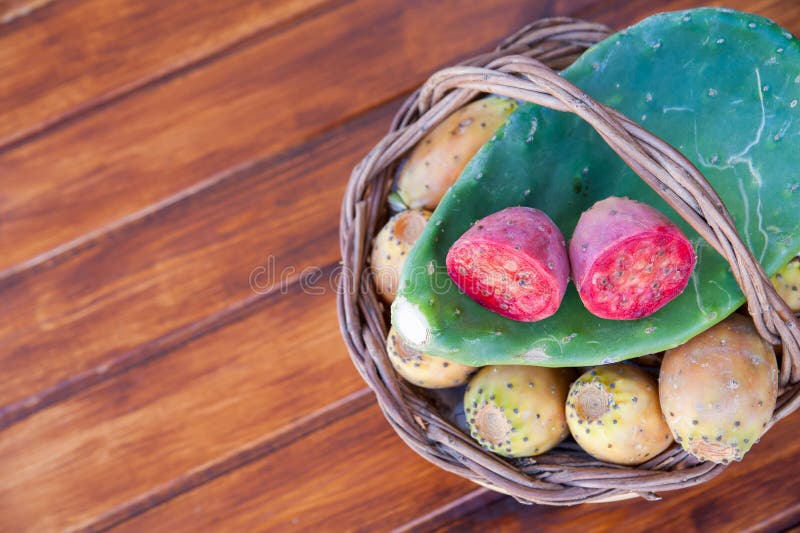Prickly pears, also known as the fruit of the Opuntia cactus, are more than just a colorful addition to the landscape; they are a delightful delicacy cherished around the world. Understanding when prickly pears reach their peak ripeness is crucial for both casual foragers and passionate growers. This article delves deep into the seasonal intricacies of prickly pears, enabling enthusiasts and farmers alike to embrace the full bounty of this unique cactus fruit.
Unlike most fruits, prickly pears have a distinct seasonal cycle that coincides with their native growing regions. Typically, these fruits thrive in arid climates, making them most prominent in areas like the southern United States, Mexico, and parts of Central and South America.
In this exploration, we will examine the biological and climatic factors that influence the timing of the prickly pear harvest, as well as tips for identifying the perfect moment to gather these vibrant, succulent fruits.
The Life Cycle of the Prickly Pear: Nature’s Timing Mechanism
The prickly pear cactus undergoes a fascinating growth cycle, beginning with flowering and culminating in the emergence of its distinctive fruits. Prickly pear flowers bloom in late spring to early summer, often from May to June depending on the local climate. The flowers are typically large, striking, and can range from yellow to deep crimson shades, making them a delight to forage as well.
Once pollination occurs, small green fruits begin to develop. These little globes will grow and evolve throughout the summer, changing color—from green to yellow, then to bright red or purple—indicating ripeness. This gradual transformation reflects the maturity of the fruit; hence, an understanding of the life cycle provides vital insight into the ideal harvest timeframe.
In most regions, the best time to harvest prickly pears is during the late summer to early fall. This is generally from late August through early October. However, variations in climate can adjust this timing. Warmer regions may see an earlier harvest, while cooler sections could delay the fruiting process.
Climate Conditions: The Unsung Heroes of Fruit Development
Understanding climate conditions is fundamental in predicting the harvest season. Prickly pears flourish in regions with hot summers and minimal rainfall, with a preference for well-drained soil. During the summer months, heat encourages the sugar content in these fruits to amplify, contributing to that sweet, juicy flavor everyone loves.
As the summer sun blazes, prickly pears absorb nutrients and moisture effectively. However, irregular weather patterns, such as unseasonably cool temperatures or excessive rain during critical growing periods, can lead to delayed maturation. It is imperative to monitor weather conditions throughout the growing season to anticipate when the prickly pears will be ready for harvesting.
The Art of Harvesting: Tactics for Timing
Timing is imperative in harvesting prickly pears. Picking too early can result in an unripe fruit that lacks sweetness and flavor. Conversely, waiting too long can lead to over-ripening, causing the fruit to become mushy or even fall from the cactus prematurely. To accurately determine the optimal moment for harvesting, rely on sensory cues and horticultural techniques.
When checking for ripeness, consider a few key factors:
- Color: The fruit should exhibit a vibrant hue that corresponds with its variety. The typical ripe prickly pear is a bright, uniformly colored red or purple.
- Texture: Gentle pressure should yield slightly to pressure, signifying that the fruit is ripe yet firm; an overly soft texture might indicate overripeness.
- Growth Position: Fruits that are fully exposed to sunlight often ripen faster than those in shaded areas of the cactus. Inspect each fruit carefully for readiness.
Utilizing protective gloves or tools is essential during harvest since prickly pears are covered in tiny, hair-like spines, known as glochids, which can cause skin irritation. Use a picking pole or long tongs to ensure safe removal of fruits without direct contact.
Harvesting Techniques: From Field to Fork
When the timeframe aligns, and the sensory cues point to ripeness, it’s time to harvest. Prickly pears can be harvested directly from the cactus and will continue to ripen off the plant. Experiences plucking wild prickly pears can lead to unexpected culinary adventures; the fruit can be processed into jams, jellies, or enjoyed fresh, adding color and unique taste to a variety of dishes.
Once harvested, it is essential to store prickly pears properly. They should be kept in a cool place, ideally in the refrigerator, to maintain freshness and flavor. With proper care, freshly harvested prickly pears can last for several weeks, awaiting their opportunity to shine in culinary creations.
Understanding the harvest timing of prickly pears transforms how one interacts with this unique fruit. By immersing oneself in the biological rhythms of the prickly pear cactus, one can unlock the secrets of taste and texture, transforming routine foraging into a seasonal celebration of these remarkable desert gems. Explore, harvest, and savor—prickly pears await the curious and the committed, promising culinary delights that carry the essence of nature’s brilliance.





Leave a Comment